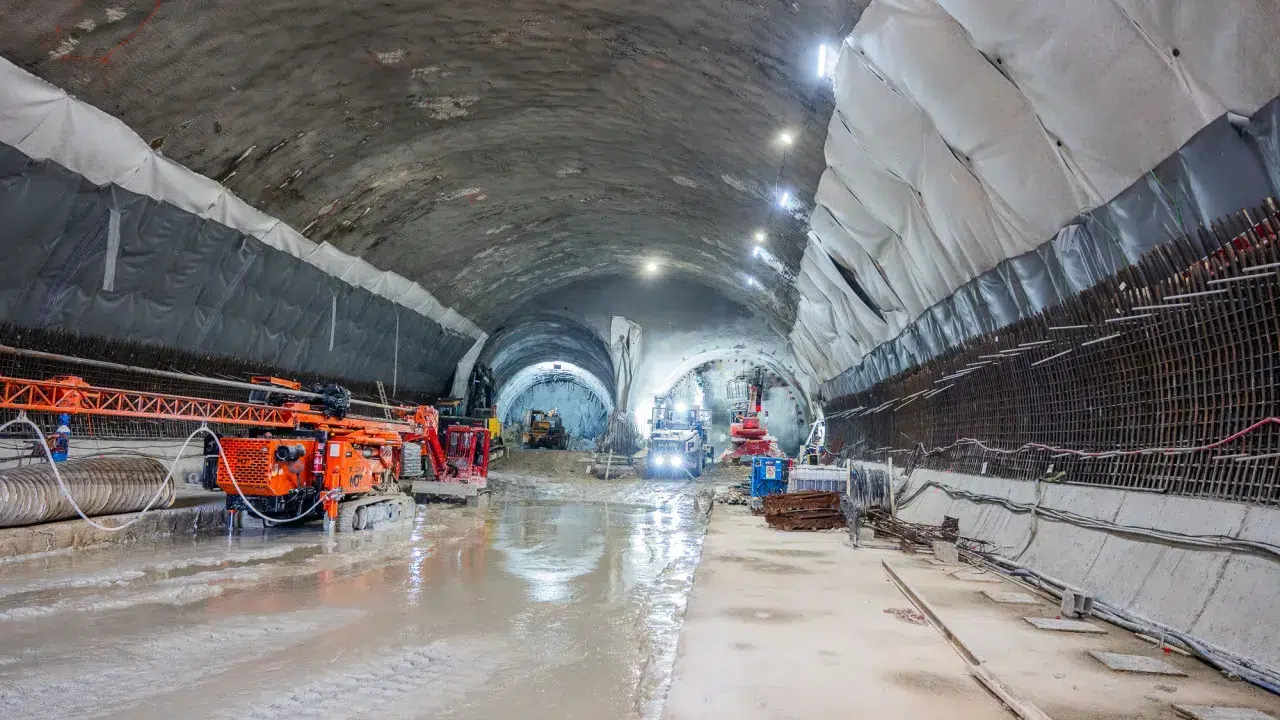
The Porto Metro has completed the last tunnel of the Rosa Line project, connecting Casa da Música and Galiza, and aims to open the infrastructure in six months, albeit later than previously suggested dates.
The gallery above features images of the project provided by Metro do Porto to Notícias ao Minuto.
What Will the Rosa Line Be Like?
With a cost amounting to 304.7 million euros, the Rosa Line will connect with the existing Casa da Música and São Bento metro stations, and include intermediate stations at Hospital de Santo António and Praça da Galiza.
“We always agreed with the contractor that after reaching this milestone, we would need about six months to complete the project, which means readying it for commercial operation. I would say that in the first quarter of 2026, we will be prepared to start commercial operations,” stated Tiago Braga, president of Metro do Porto, to journalists.
The official was speaking at the construction site of the new Casa da Música station, which will serve both the Rosa Line (São Bento – Casa da Música) and the Rubi Line (Santo Ovídio – Casa da Música) following the breakthrough (completion of the excavation) of the tunnel between Casa da Música and the Galiza station.
Tiago Braga addressed the project’s delay, which was initially expected to conclude last year in July this year, and then at the end of 2025, but he emphasized focusing on “the glass half full” rather than the delay.
The delay and challenges in excavating the last tunnel of the Rosa Line were attributed by him to “geological characteristics and terrain geotechnics,” a factor he acknowledged was not always well understood due to being “technical issues.”
“Many times we ourselves had difficulty understanding how, after a project, the buildings and the entire context would behave. And if we often had to reflect on this, surely people also have difficulty understanding it,” he stated.
However, Tiago Braga assured that “everything, everything, absolutely everything possible was done for the project to occur under the best possible circumstances, on schedule, but fundamentally from a safety perspective, which was a ‘red line,'” he stressed, celebrating the absence of serious accidents.
“The project had to progress at this pace because the technical conditions required it. There is no one more interested in completing the project quicker than the Porto Metro’s Board of Directors,” he asserted.
For Tiago Braga, the opening of a tunnel “is the most significant milestone in any geotechnical project,” part of approximately 3.5 kilometers of “100% underground” construction.
“From now on, the work – not that it is simpler – is more controllable, with fewer risks regarding the impact on the construction process,” he predicted.
Also present was the Secretary of State for Mobility, Cristina Pinto Dias, who emphasized that there would only be a “cultural shift” from individual to collective transportation if there is added value, particularly regarding travel time.
“Simultaneously, we are working towards the decarbonization targets, which are crucial for us to meet. As you know, by 2030, 29% of our transportation energy must be renewable energy, and we have CO2 [carbon dioxide] targets to meet, which will incur penalties if not achieved,” she stated.
Regarding the government’s indication of Emídio Gomes as the new president of Metro do Porto, she mentioned there is “no specific date” for his assumption of duties, but “the process is progressing naturally and will take as long as necessary” following approval from the Porto Metropolitan Area (AMP).
For the outgoing administration, Cristina Pinto Dias expressed “absolute recognition” for the team led by Tiago Braga, which also includes Lúcia Leão Lourenço and Pedro Azeredo Lopes.




